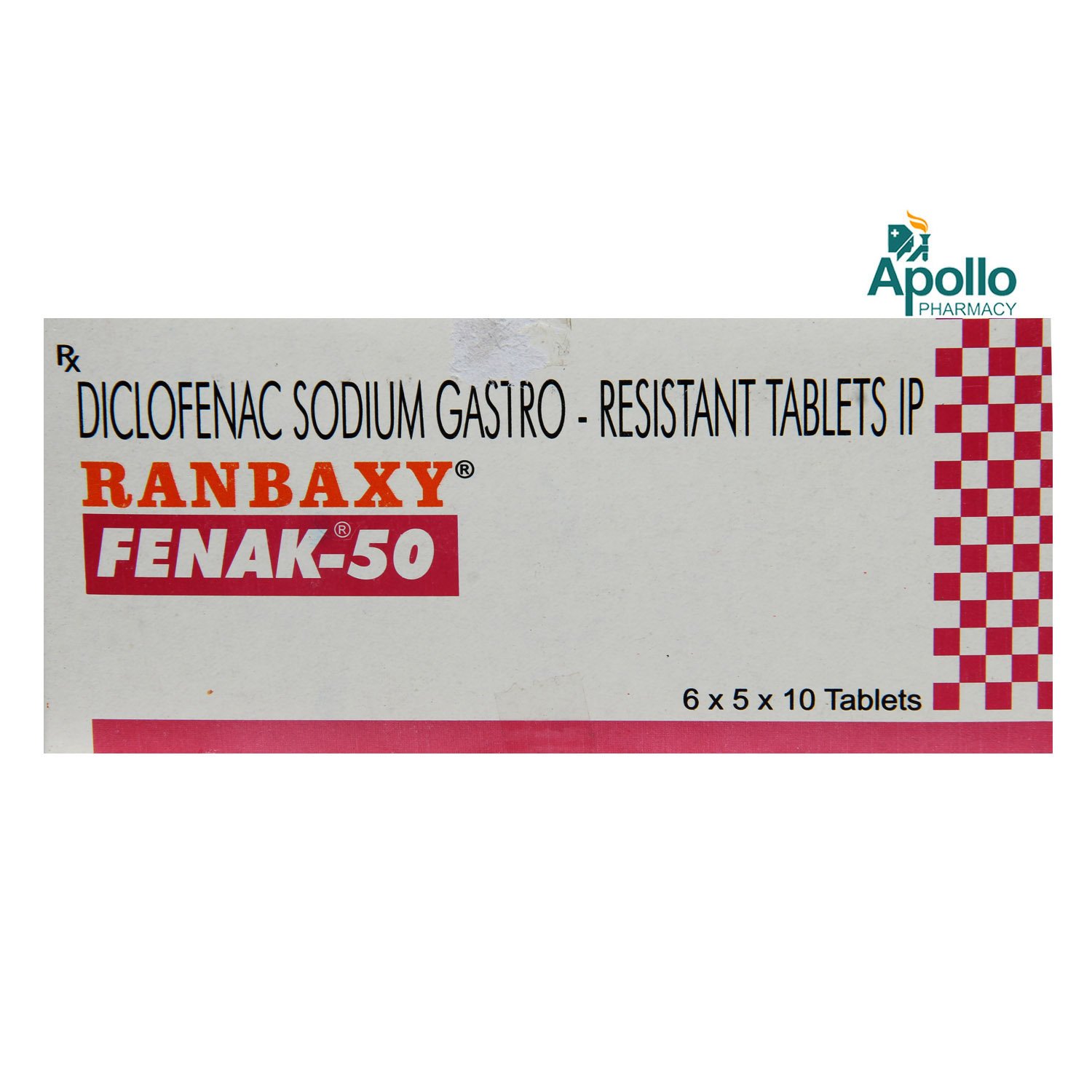Out Do Tablet 10's

MRP ₹140.5
(Inclusive of all Taxes)
₹21.1 Cashback (15%)
Out Do Tablet is used to relieve pain and inflammation associated with migraine, muscle pain, dental pain, rheumatoid arthritis, ankylosing spondylitis, osteoarthritis, gout, strain, and sprain. It contains Diclofenac, which works by blocking the effect of an enzyme called cyclo-oxygenase (COX) that produces prostaglandins responsible for pain and inflammation. Thereby, it provides relief from pain and inflammation. It may cause certain side effects such as stomach pain, heartburn, nausea, vomiting, diarrhoea, indigestion, loss of appetite, headache, and dizziness. Before taking this medicine, you should tell your doctor if you are allergic to any of its components or if you are pregnant/breastfeeding, and about all the medications you are taking and pre-existing medical conditions.
Know Your Delivery Time
Provide Delivery Location

Secure Payment

India's Most Trusted Pharmacy

Genuine Products
Synonym :
Composition :
Manufacturer/Marketer :
Consume Type :
Return Policy :
Expires on or after :
NPPA :
About Out Do Tablet
Out Do Tablet is used to relieve pain and inflammation associated with migraine, muscle pain, dental pain, rheumatoid arthritis, ankylosing spondylitis, osteoarthritis, gout, strain, and sprain. Pain is an unpleasant sensation and emotional experience associated with tissue damage.
Out Do Tablet contains Diclofenac, which works by blocking the effect of enzymes called cyclo-oxygenase (COX) that are responsible for the sense of pain and inflammation.
This medicine may cause certain side effects, such as stomach pain, heartburn, nausea, vomiting, diarrhoea, indigestion, loss of appetite, headache, and dizziness. Most of these side effects do not require medical attention. However, if the side effects are persistent, contact your doctor.
Out Do Tablet should be avoided if allergic to it. Inform your doctor if you have stomach ulcers, gastric bleeding, severe heart failure, high blood pressure and liver or kidney disease before taking Out Do Tablet . Consult your doctor if you are pregnant, planning for pregnancy or breastfeeding. Out Do Tablet is not recommended for use in children below 12 years of age, as safety has not been established.
Uses of Out Do Tablet
Out Do Tablet is used to treat Pain and inflammation. The detailed uses of Out Do Tablet are as follows:
- Pain and inflammation Relief: Out Do Tablet provides relief from moderate to severe pain and inflammation, helping with headaches, toothaches, post-operative pain, and other conditions.
- Arthritis Management: Out Do Tablet helps to manage arthritis by reducing inflammation and pain, improving joint function and mobility in conditions like rheumatoid arthritis and osteoarthritis.
- Muscle Pain Treatment: Out Do Tablet can relieve muscle pain caused by strains, injuries, or overexertion.
- Menstrual Pain Relief: Out Do Tablet helps in alleviating menstrual cramps and discomfort associated with dysmenorrhea
- Post-Trauma Pain Management: Out Do Tablet also helps manage post-traumatic pain and inflammation, supporting recovery and rehabilitation after injuries.

Have a query?
Directions for Use
- Out Do Tablet can be taken with or after food or as advised by your doctor.
- Follow your doctor's instructions on the dosage and timing of this medication.
- Swallow Out Do Tablet as a whole with a glass of water.
- Do not crush, break, or chew it.
Medicinal Benefits
- Out Do Tablet belongs to a group of medicines called non-steroidal anti-inflammatory drugs (NSAIDs).
- It relieves mild to moderate pain, swelling, and joint stiffness caused by arthritis. It is also helpful in acute migraine, muscle pain, dental pain, gout, sprain, and strain.
- Out Do Tablet works by blocking the effect of an enzyme called cyclo-oxygenase (COX) that produces prostaglandins responsible for the sense of pain and inflammation.
How Out Do Tablet Works
Storage
- Inform your doctor about the nausea and discuss possible alternatives to the medication or adjustments to the dosage.
- Divide your daily food intake into smaller, more frequent meals to reduce nausea.
- Opt for bland, easily digestible foods like crackers, toast, plain rice, bananas, and applesauce.
- Avoid certain foods that can trigger nausea, such as fatty, greasy, spicy, and smelly foods.
- Drink plenty of fluids, such as water, clear broth, or electrolyte-rich beverages like coconut water or sports drinks.
- Use ginger (tea, ale, or candies) to help relieve nausea.
- Get adequate rest and also avoid strenuous activities that can worsen nausea.
- Talk to your doctor about taking anti-nausea medication if your nausea is severe.
- Record when your nausea occurs, what triggers it, and what provides relief to help you identify patterns and manage your symptoms more effectively.
- High levels of liver enzymes need immediate medical attention.
- Watch your diet and consume low-fat foods, like green leafy vegetables, fish, whole grains, nuts, etc.
- Regularly do strengthening exercises to control your cholesterol levels.
- Avoid drinking alcohol as it can affect your liver.
- Focus on losing weight as it can help control cholesterol and maintain liver enzymes.
- Practice yoga and meditation to improve liver functioning and overall health.
- Limit processed foods and eat more vegetables and fruits.
- Exercise at least 30 minutes every day.
- Maintain a healthy weight.
- Quit smoking as it can worsen kidney damage.
- Control your blood pressure and blood glucose.
- Limit salt intake and alcohol consumption.
- Increased creatinine levels must be corrected immediately with the help of a doctor.
- Reduce strenuous activities that can lead to muscle breakdown and production of creatinine.
- Sleep for 7-8 hours per night to assist your body in repairing and rebuilding tissue.
- Manage your blood pressure by implementing changes in lifestyle like losing weight, reducing stress and exercising regularly.
- Avoid smoking and drinking alcohol.
- Report the itching to your doctor immediately; they may need to change your medication or dosage.
- Use a cool, damp cloth on the itchy area to help soothe and calm the skin, reducing itching and inflammation.
- Keep your skin hydrated and healthy with gentle, fragrance-free moisturizers.
- Try not to scratch, as this can worsen the itching and irritate your skin.
- If your doctor prescribes, you can take oral medications or apply topical creams or ointments to help relieve itching.
- Track your itching symptoms and follow your doctor's guidance to adjust your treatment plan if needed. If the itching persists, consult your doctor for further advice.
- Include iron-rich foods like dark leafy vegetables, lean red meat, legumes and fish in your diet.
- Consume vitamin C-rich foods as they aid iron absorption.
- Limit tea, cocoa, and coffee as these can slow iron absorption.
- Exercise regularly; however, do not overdo it.
- Boost Vitamin K with leafy greens (spinach, kale), broccoli, cauliflower, and cabbage.
- Include iron-rich foods like lean red meat, legumes, fortified cereals, and dark leafy greens.
- Stay hydrated by drinking plenty of water.
- Add Vitamin C-rich foods (citrus fruits, bell peppers) to enhance iron absorption.
- Limit excessive alcohol and blood-thinning foods like garlic and certain herbs.
- Engage in gentle exercise like walking, swimming, or yoga.
- Monitor injuries and apply pressure to wounds promptly.
- Schedule regular medical checkups for routine blood tests.
What if I have taken an overdose of Out Do Tablet
Drug Warnings
- Avoid taking Out Do Tablet if you are allergic to any of its components.
- Avoid taking Out Do Tablet if you have recently had heart bypass surgery, as it may increase the risk of heart attack or stroke.
- Be cautious, as Out Do Tablet may also increase the risk of stomach or intestinal bleeding.
- Inform your doctor if you have stomach ulcers, gastric bleeding, severe heart failure, high blood pressure and liver or kidney disease.
- If you have/had a severe allergy to painkillers and have conditions like asthma, rhinitis, angioedema (swelling under the skin) or skin rashes, do not take Out Do Tablet .
- Out Do Tablet not recommended for children under 12 years of age.
- Consult your doctor if you are pregnant or breastfeeding.
Drug-Drug Interactions
Drug-Drug Interactions
Login/Sign Up
Co-administration of Out Do Tablet with Meloxicam can increase the risk or severity of gastrointestinal side effects.
How to manage the interaction:
Taking Meloxicam with Out Do Tablet is not recommended as it can possibly result in an interaction, it can be taken if your doctor has advised it. However, consult your doctor immediately if you experience symptoms such as dizziness, lightheadedness, red or black, tarry stools, coughing up or vomiting fresh or dried blood that looks like coffee grounds, severe headache, and weakness. Do not stop any medication without doctor's advise.
Concomitant use of Out Do Tablet with dabigatran may increase the risk of stomach bleeding.
How to manage the interaction:
Taking Out Do Tablet with dabigatran together possibly results in an interaction, it can be taken if your doctor has advised it. You should consult a doctor immediately if you experience any unusual bleeding or bruising or have other signs and symptoms of bleeding such as dizziness, light headedness, red or black, tarry stools, coughing up or vomiting fresh or dried blood that looks like coffee grounds, severe headache and weakness. Do not stop using any medications without first talking to your doctor.
Taking Out Do Tablet with human immunoglobulin may increase the risk of kidney problems.
How to manage the interaction:
Although there is an interaction between Human immunoglobulin and Out Do Tablet, you can take these medicines together if prescribed by a doctor. However, consult the doctor immediately if you experience symptoms such as nausea, vomiting, loss of appetite, increased or decreased urination, sudden weight gain or weight loss, fluid retention, swelling, shortness of breath, muscle cramps, tiredness, weakness, dizziness, confusion, and irregular heart rhythm. Do not discontinue any medications without consulting a doctor.
Co-administration of Out Do Tablet and Apixaban may raise the risk of stomach bleeding.
How to manage the interaction:
Although there is a interaction between Out Do Tablet and apixaban, but it can be taken if your doctor has advised it. Consult a doctor if you experience symptoms like blood in your urine or stool (or a black stool), severe bruising, prolonged nosebleeds, feeling dizzy or lightheaded, weakness or severe headache, vomiting blood or coughing up blood, heavy menstrual bleeding (in women), difficulty breathing, or chest pain. Do not discontinue any medication without consulting a doctor.
Taking Out Do Tablet with Enoxaparin can increase the risk of bleeding complications.
How to manage the interaction:
There may be a possible interaction between Out Do Tablet and Enoxaparin, but they can be taken together if your doctor has prescribed them. However, consult your doctor immediately if you experience any unusual bleeding or bruising, swelling, vomiting, blood in your urine or stools, headache, dizziness, or weakness. Do not discontinue any medications without consulting a doctor.
Taking Out Do Tablet with Tolmetin may increase the risk of side effects.
How to manage the interaction:
There may be a possible interaction between Out Do Tablet and Tolmetin but can be taken if prescribed by doctor. However, consult your doctor immediately if you experience any unusual bleeding or bruising, dizziness, lightheadedness, red or black, tarry stools, coughing up or vomiting fresh or dried blood that looks like coffee grounds, severe headache, and weakness. Do not stop any medications without consulting a doctor.
Coadministration of Out Do Tablet and Ketorolac can increase the risk of side effects in the gastrointestinal tract such as inflammation, bleeding and ulceration.
How to manage the interaction:
Co-administration of Out Do Tablet and Ketorolac can lead to an interaction, but it can be taken if advised by your doctor. However, if you experience any symptoms like unusual bleeding or bruising, dizziness, lightheadedness, red or black, tarry stools, coughing up or vomiting fresh or dried blood that looks like coffee grounds, severe headache, and weakness, consult your doctor immediately. Do not stop using any medications without a doctor's advice.
Taking Out Do Tablet with Omacetaxine mepesuccinate can increase the risk of bleeding complications.
How to manage the interaction:
There may be a possible interaction between Out Do Tablet and Omacetaxine mepesuccinate but they can be taken together if your doctor has prescribed them. However, consult your doctor immediately if you experience any unusual bleeding or have other signs of bleeding like dizziness, lightheadedness, red or black, tarry stools, coughing up or vomiting fresh or dried blood that looks like coffee grounds, severe headaches. Do not discontinue any medications without consulting your doctor.
Coadministration of Out Do Tablet with cidofovir may increase the risk of kidney problems.
How to manage the interaction:
Although taking Out Do Tablet and cidofovir together can possibly cause an interaction, it can be taken if your doctor has suggested it. However, if you experience nausea, vomiting, loss of hunger, increased or decreased urination, sudden weight gain or loss, fluid retention, swelling, shortness of breath, muscle cramps, tiredness, weakness, dizziness, confusion, or an irregular heart rhythm, consult a doctor. Do not discontinue any medications without consulting a doctor.
Taking prasugrel together with Out Do Tablet may increase the risk of bleeding.
How to manage the interaction:
Co-administration of Out Do Tablet and Prasugrel can lead to an interaction; it can be taken if advised by a doctor. However, if you experience any symptoms like unusual bleeding or bruising, dizziness, lightheadedness, red or black, tarry stools, coughing up or vomiting fresh or dried blood that looks like coffee grounds, severe headache, and weakness, consult your doctor immediately. Do not stop using any medications without a doctor's advice.
Drug-Food Interactions
Drug-Food Interactions
Login/Sign Up
Diet & Lifestyle Advise
- Include turmeric and fish oils, as they help in reducing inflammation.
- Please do not go for heavy exercise as it may increase joint pain and arthritis. Instead, you can do stretching and impact aerobic exercises like walking on a treadmill, bike riding and swimming. You can also strengthen your muscles by lifting light weights.
- Include fish like salmon, trout, tuna and sardines. These fish are enriched with omega-3 fatty acids that ramp up inflammation.
- Your sitting posture is important, especially when you have pain and inflammatory conditions. Try to sit as little as possible and only for a short time (10-15 min). Use a back support like a rolled-up towel at the back of the curve to minimise pain. Keep your knees and hips at a right angle. Besides this, you can use a footrest if required.
- Adopting a healthy lifestyle coupled with a diet containing high protein is the mainstay in the management of arthritic conditions.
Habit Forming
Therapeutic Class
All Substitutes & Brand Comparisons
RX
Out of StockAdiflam 50mg Tablet
₹8.37
(₹0.75 per unit)
94% CHEAPERRX
Dan Tablet 10's
Unison Pharmaceuticals Pvt Ltd
₹8.5
(₹0.77 per unit)
93% CHEAPERRX
Fenak 50 mg Tablet 10's
Sun Pharmaceutical Industries Ltd
₹17.5
(₹1.32 per unit)
89% CHEAPER
Alcohol
Unsafe
You are recommended not to consume alcohol along with Out Do Tablet to avoid unpleasant side effects.
Pregnancy
Consult your doctor
Out Do Tablet is not recommended during pregnancy. Please consult your doctor. Your doctor will prescribe an alternative medicine after overweighing the benefits over the risks.
Breast Feeding
Caution
There is not enough evidence to establish the safety of Out Do Tablet in nursing mothers. So, it is advisable to take Out Do Tablet only if prescribed by your doctor.
Driving
Unsafe
Out Do Tablet may cause dizziness. So avoid driving or drive only if you are alert.
Liver
Consult your doctor
If u have or had a history of any liver-related diseases, please consult the doctor before taking Out Do Tablet .
Kidney
Consult your doctor
If you have or had a history of kidney-related diseases, please consult a doctor before taking Out Do Tablet .
Children
Unsafe
Out Do Tablet not recommended for children under 12 years of age.
Heart
Out Do Tablet should be used with caution in heart patients, as it can cause an increase in the risk of side effects.
Geriatrics
Caution
Out Do Tablet should be used with caution in elderly patients. Please consult your doctor before use.
FAQs
Out Do Tablet is used to relieve pain and inflammation associated with migraine, muscle pain, dental pain, rheumatoid arthritis, ankylosing spondylitis, osteoarthritis, gout, strain, and sprain.
Out Do Tablet works by blocking the effect of an enzyme called cyclo-oxygenase (COX) that produces prostaglandins responsible for the sense of pain and inflammation. Thus, it provides relief from pain and inflammation.
Out Do Tablet can be stopped if it is prescribed for short-term pain relief. If it has been prescribed for long-term usage, it is advised to continue as advised by your doctor.
Out Do Tablet may cause dizziness in some patients. Drive only if you are alert after taking Out Do Tablet and omit driving if you feel dizzy.
No, Out Do Tablet is not indicated for stomach pain. If you have symptoms of stomach pain, contact your doctor.
Country of origin
Manufacturer/Marketer address
Disclaimer
Author Details
We provide you with authentic, trustworthy and relevant information
Buy best C.n.s Drugs products by
Intas Pharmaceuticals Ltd
Sun Pharmaceutical Industries Ltd
Torrent Pharmaceuticals Ltd
Alkem Laboratories Ltd
Alteus Biogenics Pvt Ltd
Abbott India Ltd
Cipla Ltd
Micro Labs Ltd
Lupin Ltd
Tripada Healthcare Pvt Ltd
D D Pharmaceuticals Pvt Ltd
Ipca Laboratories Ltd
Arinna Lifesciences Ltd
Icon Life Sciences
Mankind Pharma Pvt Ltd
Linux Laboratories Pvt Ltd
Cnx Health Care Pvt Ltd
East West Pharma India Pvt Ltd
La Renon Healthcare Pvt Ltd
Emcure Pharmaceuticals Ltd
Eris Life Sciences Ltd
Talent India Pvt Ltd
Leeford Healthcare Ltd
Consern Pharma Ltd
Tas Med India Pvt Ltd
Macleods Pharmaceuticals Ltd
Zydus Healthcare Ltd
Jagsam Pharma
Troikaa Pharmaceuticals Ltd
Dr Reddy's Laboratories Ltd
Matias Healthcare Pvt Ltd
Ikon Pharmaceuticals Pvt Ltd
Sigmund Promedica
Aristo Pharmaceuticals Pvt Ltd
Ardent Life Sciences Pvt Ltd
Shine Pharmaceuticals Ltd
Zydus Cadila
Theo Pharma Pvt Ltd
Wockhardt Ltd
Lifecare Neuro Products Ltd
Propel Healthcare
Crescent Formulations Pvt Ltd
Mesmer Pharmaceuticals
Matteo Health Care Pvt Ltd
Reliance Formulation Pvt Ltd
Ajanta Pharma Ltd
Morepen Laboratories Ltd
Neon Laboratories Ltd
Capital Pharma
Med Manor Organics Pvt Ltd
Akumentis Healthcare Ltd
Lyf Healthcare
Msn Laboratories Pvt Ltd
Sanix Formulation Pvt Ltd
Pulse Pharmaceuticals
Brainwave Healthcare Pvt Ltd
Hetero Healthcare Pvt Ltd
Cyrus Remedies Pvt Ltd
Sanofi India Ltd
Solvate Laboratories Pvt Ltd
Elder Pharmaceuticals Ltd
Novartis India Ltd
Psyco Remedies Ltd
Medishri Healthcare Pvt Ltd
Quince Lifesciences Pvt Ltd
Alniche Life Sciences Pvt Ltd
Crescent Therapeutics Ltd
Hbc Life Sciences Pvt Ltd
Mova Pharmaceutical Pvt Ltd
Prevego Healthcare & Research Pvt Ltd
Cadila Healthcare Ltd
Tripada Lifecare Pvt Ltd
Alembic Pharmaceuticals Ltd
Kivi Labs Ltd
Solis Pharmaceuticals
Talin Remedies Pvt Ltd
Infivis Life Care
Serotonin Pharmaceuticals Llp
Glenmark Pharmaceuticals Ltd
Aareen Healthcare Pvt Ltd
Trion Pharma India Llp
A N Pharmacia Laboratories Pvt Ltd
Cadila Pharmaceuticals Ltd
Gagnant Healthcare Pvt Ltd
Primus Remedies Pvt Ltd
Vasu Organics Pvt Ltd
Crescent Pharmaceuticals
Glarizonto Pharma Pvt Ltd
Knoll Healthcare Pvt Ltd
Lyceum Life Sciences Pvt Ltd
Wallace Pharmaceuticals Pvt Ltd
Zuventus Healthcare Ltd
Arches Pharmaceuticals
Divine Savior Pvt Ltd
Lia Life Sciences Pvt Ltd
Lincoln Pharmaceuticals Ltd
Maneesh Pharmaceuticals Ltd
USV Pvt Ltd
Corona Remedies Pvt Ltd
Dycine Pharmaceuticals







